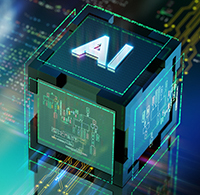AI Transformation Starts with Concepts
By: Angus Ward

As expected, AI dominated conversations at Mobile World Congress (MWC) 2024. On the opening day five global operators announced a joint venture, The Global Telco AI Alliance, specifically to develop Large Language Models (LLM) dedicated to meeting telco needs. With commercial gains on the cards and a chance not to relinquish control of AI workloads to the hyperscalers, this could be a significant revenue spinner for those involved. Elsewhere, the showroom floor was strewn with narratives of AI-powered services that may pull the industry out of its identity crisis.
The telecoms industry faces huge pressures to innovate and drive efficiencies as it grapples with its growth challenges. The impact of AI will be more significant than anything that has come before, delivering reductions in operating costs, elevating customer journeys, and defining new revenue streams in non-traditional telco markets. However, what most companies hawking AI solutions at MWC won’t admit, is that they’re all concepts. Barely a few of them are ready for “prime time.” That’s because it takes time and customer data to train AI solutions — two years and 30 customer data sets is my estimation. What we really saw from the industry was a statement of intent rather than readiness to launch use cases.
The intriguing thing about AI at its current stage is that so much is still unknown and unexplored. The potential applications seem nearly limitless, which emphasizes just how important it is that any Communications Services Provider (CSP) looking to establish AI leadership embraces concepts. After all, AI is not something you buy, it’s something you build, collaboratively.
AI is Not the End Game
Solutions to customer problems cannot always be prescribed, as there is no such thing as one size fits all. Circumstances differ, and it is hard for one business to have all the remedies. But AI provides a breakthrough. It is higher automation, coupled with faster, more intelligent decision-making capabilities. It opens the door for greater exploration and more meaningful resolutions to the problems that CSPs and their customers seek to solve.
Fundamentally, AI is not the end game, but it is a means to an end. For CSPs that end is represented by cutting out inefficiencies and harnessing the technology to provide more precise, accurate, and relevant solutions that meet customer, partner, and business objectives. While efficiency is currently the main focus, AI is really about enablement. It can take CSPs to places they couldn’t go before because they lacked a skilled headcount or deep understanding of vertical markets. Now they will finally be able to step into new industries by becoming ecosystem orchestrators capable of capturing coveted B2B revenues.
To put that into perspective, AI has myriad benefits for CSPs still scratching their heads over monetization and achieving ROI from their investments in their 5G and IoT businesses. Let’s frame it in the context of the agriculture sector. Farmers are eager to adopt new technologies and modernize their operations to balance increasing demand for food production with sustainable practices. This introduction of technology in farming is often referred to as “precision agriculture.” Its integration, however, faces numerous challenges pertaining to the adoption of advanced technologies: non-existing infrastructure, lack of technological maturity and the means of integrating with existing farming practices, as well as the general limited availability of tailored agricultural technology solutions available through CSPs.
No, AI doesn’t immediately solve those problems in isolation. But when combined with several other components it is a very powerful tool that can help CSPs accelerate the availability of (in this scenario) precision agriculture solutions. CSPs have been working towards such offerings for vertical sectors for several years, through a combination of building partner ecosystems and redesigning themselves as platform businesses to offer digital services from one, central telco-owned marketplace. CSPs have combined the high bandwidth and low latency capabilities of 5G with Multi-Access Edge Computing for real-time data processing and specialist solutions from partners that, for example, offer drone or robotics technologies. But clarity on the specific use cases is still sometimes unclear.
AI can take things a step further and complete the puzzle. It can provide key assistance in identifying solutions for tasks like crop monitoring, disease detection, and automation of routine tasks like irrigation and weeding. The CSP is then able to



















